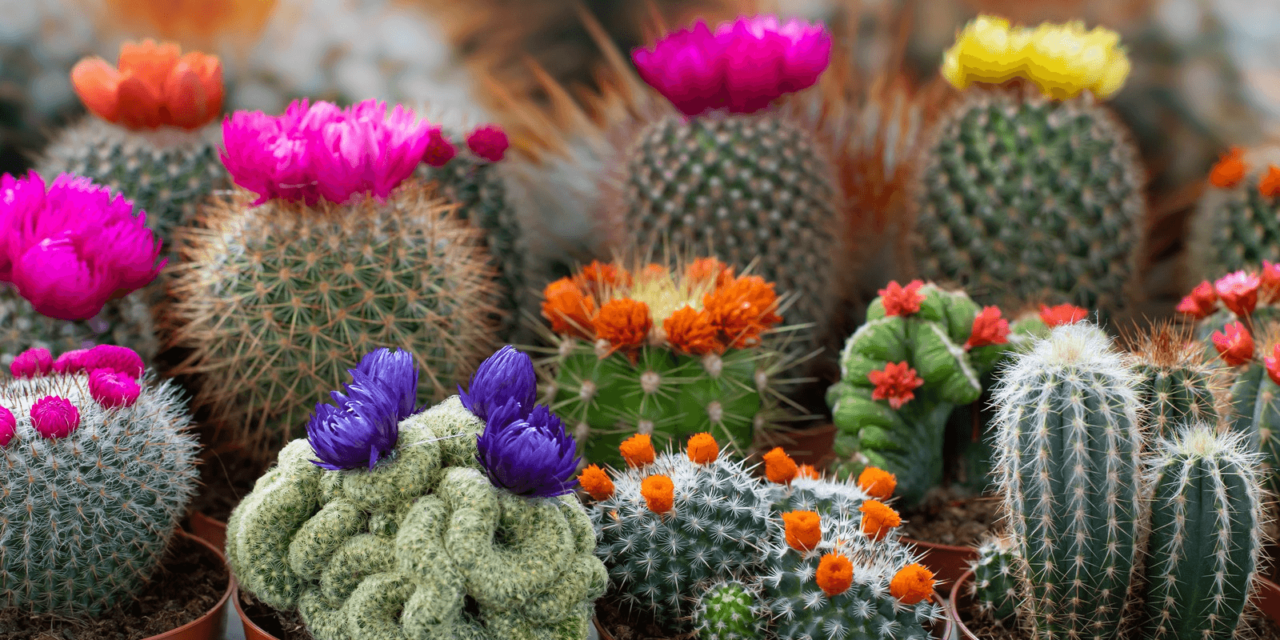Cacti are an excellent addition to any home or garden due to their low maintenance requirements and unique beauty. They are hardy, drought-tolerant plants that are perfect for beginners who want to dip their toes into gardening. Cacti come in a variety of shapes and sizes, from the small and delicate to the tall and imposing. In this guide, we'll go over everything you need to know about growing and caring for cacti.

Types of Cacti
Cacti come in many different shapes and sizes. Some are tall and columnar, while others are short and round. Here are a few of the most common types of cacti:
- Barrel Cacti: These cacti are usually round and barrel-shaped. They can grow up to three feet tall and have spines all over their surface.
- Hedgehog Cacti: Hedgehog cacti are small, round cacti that grow in clusters. They usually have short spines and bright, colorful flowers.
- Christmas Cacti: Christmas cacti are unique in that they bloom in the winter, producing beautiful red or pink flowers. They have flat, segmented leaves and do well in low light conditions.
- Saguaro Cacti: Saguaro cacti are the classic cactus that you might picture in your mind. They are tall, columnar cacti that can grow up to 40 feet tall.
- Prickly Pear Cacti: Prickly pear cacti have flat, paddle-shaped leaves that are covered in spines. They produce colorful flowers and edible fruit.
Choosing the Right Cactus
When it comes to choosing the right cactus, there are a few things to keep in mind. First, consider the size of your space. If you live in a small apartment, a large saguaro cactus might not be the best choice. Instead, opt for a smaller, more manageable cactus like a barrel cactus or hedgehog cactus.
Next, think about the amount of light your space gets. Cacti thrive in bright, direct sunlight, so if you have a sunny window or balcony, you're in luck. If not, look for cacti that can tolerate lower light conditions, like Christmas cacti.
Finally, consider your level of experience with gardening. Some cacti are more forgiving than others, so if you're new to gardening, start with a cactus that is known for being low-maintenance, like a barrel cactus or prickly pear cactus.
Potting and Soil
When it comes to potting cacti, there are a few things to keep in mind. First, choose a pot that has drainage holes to prevent water from sitting in the bottom of the pot and causing root rot. You can also add a layer of rocks or gravel to the bottom of the pot to improve drainage.
Next, choose a well-draining soil mix specifically designed for cacti. These mixes are usually made up of sand, perlite, and peat moss and will provide the proper drainage and nutrients for your cactus.
Planting Your Cactus

When planting your cactus, make sure to wear gloves to protect your hands from the spines. Carefully remove the cactus from its nursery pot and loosen any tightly wound roots. Place the cactus in the new pot and fill in the gaps with soil, being careful not to cover the base of the cactus.
Watering
Cacti are drought-tolerant plants, which means they can go long periods without water. In fact, overwatering is one of the most common mistakes people make when caring for cacti. Here are a few tips for watering your cacti.
- Water sparingly: Only water your cactus when the soil is completely dry. Stick your finger into the soil about an inch deep – if it feels dry, it's time to water.
- Water deeply: When you do water your cactus, give it a deep watering. This means saturating the soil until water runs out of the drainage holes in the pot. This will ensure that the roots get enough water without leaving any excess water in the soil.
- Water in the morning: It's best to water your cactus in the morning, so it has time to dry out during the day. This will help prevent any fungal or bacterial growth on the plant.
- Be cautious in winter: During the winter months, when temperatures are cooler and daylight hours are shorter, cacti go into a state of dormancy and require less water. Reduce watering to once every two to three weeks during this time.
Lighting
As mentioned earlier, cacti thrive in bright, direct sunlight. If you're growing your cactus indoors, place it in a sunny window or under a grow light for at least six hours a day. If you're growing your cactus outdoors, choose a spot that gets full sun for most of the day.
However, be careful not to expose your cactus to too much direct sunlight, especially during the hottest parts of the day. This can cause sunburn and damage the plant. If you notice your cactus turning yellow or brown, it may be getting too much sun – move it to a shadier spot.
Fertilizing
Cacti don't require much fertilizer, but a little bit of extra nutrition can help them grow and thrive. Use a fertilizer specifically designed for cacti, and only fertilize during the growing season (spring and summer). Follow the instructions on the fertilizer package carefully, as over-fertilizing can be harmful to your cactus.
Pruning
Cacti don't require much pruning, but it's a good idea to remove any dead or damaged branches or leaves. Use a sharp, clean pair of scissors or pruning shears to make the cut, and be careful not to damage the rest of the plant.
Pests and Diseases
Cacti are generally resistant to pests and diseases, but they can still be affected by a few common problems. Here are a few things to watch out for:
- Mealybugs: These small, white bugs can infest cacti and suck the sap out of the plant. If you notice cottony, white masses on your cactus, it may be a mealybug infestation. Treat with an insecticidal soap or alcohol solution.
- Scale: Scale insects are small, brown or black insects that attach themselves to the cactus and suck the sap. They can be treated with an insecticidal soap or horticultural oil.
- Root rot: Overwatering can cause root rot, which can kill your cactus. If you notice your cactus turning yellow and mushy, it may have root rot. Stop watering immediately and remove any affected roots. Repot in fresh soil and reduce watering.
Cacti are a great choice for beginners who want to dip their toes into gardening. They're low-maintenance, unique, and beautiful, and can add a touch of desert flair to any home or garden. By following these tips for growing and caring for cacti, you'll be able to enjoy these hardy plants for years to come.



















